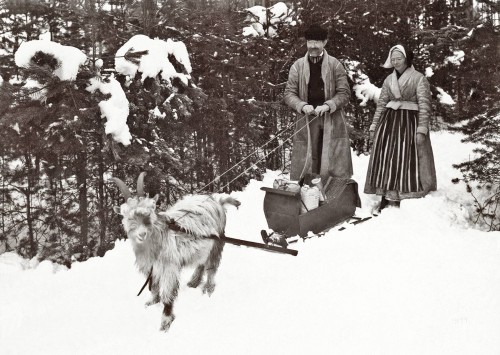Come già altrove osservato per quanto riguarda la civiltà romana, anche nelle civiltà nordiche, specificatamente quella celtica e quella norrena, si potrebbe pensare che, riflettendo quelle che, nell’immaginario collettivo, si strutturano come società guerriere, il pantheon religioso finisse per escludere la presenza di figure femminili in posizioni di particolare rilievo.
In realtà, già l’idea di “società guerriere” per quanto riguarda le civiltà menzionate andrebbe ampiamente riveduta rispetto all’immaginario collettivo: se, infatti, in entrambe risulta presente, come in qualunque altro contesto del mondo antico, una componente guerriera legata a necessità espansive, predatorie o difensive, non è in alcun modo possibile paragonare né la società celtica né quella norrena a contesti come, ad esempio, quello spartano o quello di Roma alto-imperiale, in cui la funzione bellica risultava normalmente prevalente.
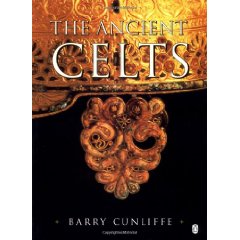 Per quanto i Celti, la componente guerriera era, in fin dei conti, ristretta alla scelta di un capo (“Ri”) di ogni clan (“Tauath”) tra le diverse famiglie componenti (“Fine”) capace di guidare gli uomini in una eventuale guerra e di stipulare alleanze con altri clan, ma, già all’interno del clan stesso, la nobiltà non era necessariamente dedita alle armi, essendo formata in buona parte da proprietari terrieri (le altre due classi sociali erano date da artisti e druidi e da contadini e artigiani)[1].
Per quanto i Celti, la componente guerriera era, in fin dei conti, ristretta alla scelta di un capo (“Ri”) di ogni clan (“Tauath”) tra le diverse famiglie componenti (“Fine”) capace di guidare gli uomini in una eventuale guerra e di stipulare alleanze con altri clan, ma, già all’interno del clan stesso, la nobiltà non era necessariamente dedita alle armi, essendo formata in buona parte da proprietari terrieri (le altre due classi sociali erano date da artisti e druidi e da contadini e artigiani)[1].
Il valore del singolo (il cosiddetto “prezzo d’onore” in base al quale si stabilivano punizioni e ammende) non veniva attribuito sulla base dei successi guerreschi quanto su elementi ben differenti, che andavano dalle capacità lavorative (in particolare per quanto riguardava il possesso di tecniche artigianali) alle conoscenze sacre (tanto che aedi e druidi erano esentati da qualunque attività militare), alle ricchezze materiali (misurate in termini di terre e capi di bestiame posseduti) fino alle doti estetiche (sia uomini che donne erano attentissimi al loro aspetto e alla loro forma fisica)[2]. Anche gli insediamenti non mostrano una particolare visione virile e marziale dell’esistenza: ogni “Fine” viveva per lo più in fattorie isolate e non in aree fortificate, che venivano utilizzate solo nel caso in cui un “Tauath” si trovasse in guerra, così come, a conti fatti, le tecniche agricole e zootecniche celtiche, che comprendevano la rotazione biennale e l’addomesticamento di pressoché ogni animale, ci appaiono oggi ben più sviluppate delle tecniche belliche, che includevano unicamente l’attacco frontale non protetto[3].
In più, anche le numerose “guerre tra clan” ci appaiono oggi più che altro dispute territoriali risolte da una prima “componente scenografica” in cui linee di guerrieri di entrambe le parti si fronteggiavano in assetto da guerra (cioè nudi, con spade e giavellotti e coperti di monili e colori di guerra) insultandosi lungamente ma poi tutto veniva deciso dallo scontro di due “campioni”[4]. Insomma, rispetto a certe immagini moderne, i Celti risultano molto più un popolo piuttosto pacifico di agricoltori, allevatori e abili mercanti (la loro rete commerciale era estesissima) con, in più, uno sviluppatissimo senso religioso che si differenziava tra una spiritualità popolare, con un ampio pantheon di divinità in gran parte legate ad ogni “tuath”, ed una religiosità alta, tipicamente druidica, che si concentrava su un culto delle forze naturali[5].
Sebbene con un diverso (ma non inferiore) livello di speculazione filosofico-religiosa, considerazioni non dissimili si adattano anche alla società norrena. Pur disegnati dalle cronache medievali come guerrieri feroci (come, in realtà, divenivano in caso di guerra) e predoni sanguinari (cosa anche questa veritiera, ma legata, più che altro, a necessità di sopravvivenza in momenti di estrema improduttività di zone già normalmente piuttosto sterili), i Vichinghi facevano parte di una società, così come descritta nel Rígsþula, eminentemente agricola e, a differenza di strutturazioni fortemente gerarchico-piramidali e rigide tipiche di popoli bellicosi, notevolmente fluida. La grande maggioranza dei norreni appartenevano alla classe media, la classe dei “Karls”, formata da artigiani e piccoli proprietari terrieri. Gli “Jarls”, i nobili (per altro non presenti in alcune zone particolari come l’Islanda), si distinguevano per la loro ricchezza, misurata in termini di seguaci, tesori, navi, e, soprattutto, tenute agricole e non per particolari doti guerriere, se non quelle legate alla difesa dei seguaci stessi. Il compito essenziale dello Jarl era, infatti, quello di sostenere la sicurezza, la prosperità, e l’onore dei suoi seguaci e per questo si serviva di un gruppo molto ristretto di “soldati professionisti”, per lo più giovani, detti “hirðmaðr”, ma nella sua carica le abilità di amministrazione agricola e di espressione oratoria erano molto più importanti che il saper maneggiare le armi.
Sotto entrambe le classi vi erano i “þræll”, i servi e gli schiavi, più normalmente finiti in tali condizioni per debiti che per essere frutto di raid bellicosi.
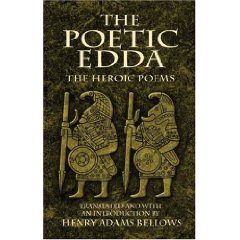 Anche all’interno dei popoli norreni, così come tra i Celti, la cultura era tenuta in gran conto: i poeti, in uno status simile a quello reale e molto spesso i Godi, i capi locali che avevano compiti giuridici e amministrativi (in particolare in Islanda) venivano scelti tra i sacerdoti della religione odinica, considerati come esseri che avevano un rapporto speciale con gli dei. Di fatto, però, il vero potere si basava sul possesso di terra e sul numero di capi di bestiame allevati o, nel caso dei commercianti, sul valore delle loro ricchezze[6].
Anche all’interno dei popoli norreni, così come tra i Celti, la cultura era tenuta in gran conto: i poeti, in uno status simile a quello reale e molto spesso i Godi, i capi locali che avevano compiti giuridici e amministrativi (in particolare in Islanda) venivano scelti tra i sacerdoti della religione odinica, considerati come esseri che avevano un rapporto speciale con gli dei. Di fatto, però, il vero potere si basava sul possesso di terra e sul numero di capi di bestiame allevati o, nel caso dei commercianti, sul valore delle loro ricchezze[6].
Insomma, anche in questo caso siamo di fronte ad una società eminentemente agricolo-commerciale e solo occasionalmente guerriera.
Per molti versi, le caratteristiche meno “marziali” di quanto certa epica hollywoodiana vorrebbe far credere su Celti e soprattutto Vichinghi, si riflettono sulla condizione della donna in entrambe le società.
Sebbene le fonti classiche (latine e greche) non ci dicano molto sulle donne nella società celtica, sia dalle saghe che dai reperti archeologici possiamo evincere che esse godessero, in paragone al mondo classico mediterraneo, di libertà notevoli e, in alcune occasioni, anche di grande potenza: certamente tutta la produzione alimentare e l’intera gamma della produzione artigianale (ceramica, vimini, lavorazione del cuoio, tessitura delle stoffe) erano, infatti, loro appannaggio, spesso portando a notevoli ricchezze e, come visto, la ricchezza portava a potere politico, così che non sono infrequenti i casi di capiclan donne o, addirittura, di regine (si pensi a Boudica) nel corso della storia celtica. Sebbene siano probabilmente erronee le idee di una poligamia sia maschile che femminile, anche il matrimonio era visto più in forma di collaborazione paritaria rispetto al modello di proprietà dei Greci e dei Romani, una collaborazione consensuale che poteva essere interrotta in qualsiasi momento anche da parte della donna, che aveva la piena possibilità di lasciare un cattivo matrimonio portando con sé tutto quello che aveva portato in dote. e se è, altresì, falso dire che il mondo celtico fosse matriarcale, nondimeno la discendenza matrilineare era importante quanto e forse più di quella della linea maschile[7].
Il campo in cui l’alta considerazione delle donne si esprimeva più chiaramente era, però, quello religioso.
Come è noto, nell’antica società celtica i druidi e le druidesse formavano una élite intellettuale esperta, dopo uno studio ventennale, di letteratura, poesia, storia, legge, astronomia, erboristeria e medicina e, naturalmente di tutto quanto riguardasse la sfera del sacro.
 Nei primi documenti romani riguardanti i Celti non si fa menzione, come giustamente osserva Jones[8], di figure sacerdotali femminili, probabilmente a causa dell’impossibilità per gli scrittori di Roma di concepire una indifferenziazione sessuale nelle cariche pubbliche ma, finalmente, nel I secolo d.C., è Tacito che ci informa che “i Celti non facevano alcuna distinzione tra governanti maschi e femmine“[9]. Essendo quella celtica una cultura orale, è difficile per noi oggi comprendere se tale governo fosse soprattutto spirituale o vi fosse una commistione tra potere religioso e temporale. Di fatto, alcune sepolture trovate a Vix e Reinham mostrano che le donne celtiche, in alcuni casi, potevano esercitare un forte potere politico, ma sono soprattutto le saghe come il Mito di Finn a dirci della presenza di druidesse e “donne sagge” nel mondo celtico: veggenti, incantattrici e persino addette a sacrifici sacrali sono comuni nelle leggende folkloristiche e ci dicono di una totale pariteticità di ruoli spirituali tra uomini e donne[10] .
Nei primi documenti romani riguardanti i Celti non si fa menzione, come giustamente osserva Jones[8], di figure sacerdotali femminili, probabilmente a causa dell’impossibilità per gli scrittori di Roma di concepire una indifferenziazione sessuale nelle cariche pubbliche ma, finalmente, nel I secolo d.C., è Tacito che ci informa che “i Celti non facevano alcuna distinzione tra governanti maschi e femmine“[9]. Essendo quella celtica una cultura orale, è difficile per noi oggi comprendere se tale governo fosse soprattutto spirituale o vi fosse una commistione tra potere religioso e temporale. Di fatto, alcune sepolture trovate a Vix e Reinham mostrano che le donne celtiche, in alcuni casi, potevano esercitare un forte potere politico, ma sono soprattutto le saghe come il Mito di Finn a dirci della presenza di druidesse e “donne sagge” nel mondo celtico: veggenti, incantattrici e persino addette a sacrifici sacrali sono comuni nelle leggende folkloristiche e ci dicono di una totale pariteticità di ruoli spirituali tra uomini e donne[10] .
La situazione non è esattamente identica nelle aree norrene. I ruoli di uomini e donne nella società norrena erano ben distinti ed erano i primi ad avere il dominio: le donne difficilmente partecipavano alle incursioni (anche se chiaramente parteciparono a viaggi di esplorazione e insediamento in posti come Islanda e Vinland) e alcuni comportamenti “mascolini” (indossare abiti maschili, tagliarsi i capelli corti, portare armi) erano loro severamente vietati dalla legge. Difficilmente partecipavano all’attività politica (non potevano essere Godi o giudici), di norma non potevano parlare nel “Thing” (assembla di clan) e, formalmente erano sottoposte all’autorità paterna. Ugualmente, però, è impossibile non vedere come le donne fossero molto rispettate nella società vichinga e avessero una grande libertà, soprattutto se paragonata ad altre società europee di quel periodo: gestivano le finanze della famiglia, dirigevano la fattoria in assenza del marito, in caso di vedovanza potevano diventare ricche e importanti proprietarie terriere ed erano ampiamente legalmente protette da una vasta gamma di attenzioni indesiderate. Significativo è che i personaggi femminili delle saghe siano lodati per la bellezza ma più spesso per la loro saggezza: in moltissimi casi emerge come siano le donne il potere neppure troppo occulto dietro le decisioni maschili e come la loro influenza sia quasi sempre positiva. Anche all’interno del nucleo familiare una donna poteva usare la minaccia di divorzio come un mezzo per stimolare il marito in azione: ottenere il divorzio era relativamente facile e poteva dar luogo a gravi oneri finanziari per il marito. Inoltre, le donne erano spesso viste come depositarie della magia “bianca” (e, come tali, erano spesso temute anche dai personaggi più importanti del “Thing” dei quali diventavano ascoltate consigliere) e delle conoscenze medico-erboristiche di origine divina[11].
 In entrambe le società, dunque, è possibile notare come, nell’immaginario collettivo, l’elemento femminile avesse una sorta di “legame speciale” con il sacro. Da dove derivava questa diffusa credenza? Naturalmente, come in ogni altra società umana, lasciando da parte le caratteristiche tipicamente “lunari” di riflessività, “insight” e intuitività, dal potere femminile per eccellenza: quello generativo-creativo.
In entrambe le società, dunque, è possibile notare come, nell’immaginario collettivo, l’elemento femminile avesse una sorta di “legame speciale” con il sacro. Da dove derivava questa diffusa credenza? Naturalmente, come in ogni altra società umana, lasciando da parte le caratteristiche tipicamente “lunari” di riflessività, “insight” e intuitività, dal potere femminile per eccellenza: quello generativo-creativo.
Non stupisce, allora, che, in un comune gioco di riflessi tra “supra” e “infra”, sia possibile reperire elementi chiaramente legati al femminino sacro in entrambe le culture.
All’interno del mondo celtico e della sua ricchissima strutturazione religiosa, al di là di rielaborazioni fantasiose e romanzesche su Avalon e le sue sacerdotesse e di teorie new e next age di stampo Wicca, due figure sacre rispecchiano più di tutte le altre (numerose) divinità femminili il femminino sacro declinato nel suo senso generativo-maternale, con tutto ciò che, in termini di creazione e alimentazione fisica e spirituale dell’essere umano ciò comporta: Rhiannon e Cerridwen.
La dea Rhiannon è una dea lunare gallese il cui nome significa Grande (o divina) Regina. Per molti versi è una figura di potere assoluto, sovrana degli dei e, a livello filosoficamente più alto, rappresentante simbolica della natura. All’interno della religiosità popolare la sua immagine è fortemente associata con gli equini: nella storia di Rhiannon, così come raccontata dalle saghe folkloristiche i cavalli svolgono un ruolo importante dal momento che essa prima cattura l’attenzione del suo futuro sposo mentre è cavallo, cavalcando con lui ne conquista l’amore e, allorché ingiustamente accusata (e poi riabilitata) della morte del figlio da lui concepito, sopporta il peso della punizione con grazia e dignità, mostrando, come sottolineato proprio dai testi mitologici, una energia equina di resistenza[12]. Questo accostamento può apparire sconcertante, ma solo se decontestualizziamo il racconto dal suo background d’origine, rappresentato da allevatori di pony: come dea dei cavalli, infatti, Rhiannon viene a rappresentare sia la generatività naturale, che perpetua le mandrie di generazione in generazione, sia il sostentamento umano, che proprio su tale generatività si basa. Rhiannon è, comunque, una divinità multifunzionale, che racchiude in sé anche il senso dell’ordine naturale delle cose e della giustizia distributiva e retributiva maternale propria, appunto, della natura così come percepita dai Celti con la sua capacità di trascendere l’ingiustizia, avendo compassione e comprensione per coloro che falsamente l’accusano.
Ancora in sintonia con l’immagine della madre, la dea è nota per avere uccelli magici che cantano canzoni incantate che riportano sonni tranquilli agli esseri umani (i suoi figli) e, infine, ritornando al suo ruolo creativo anche sul piano simbolico, agisce come una Musa, portando l’energia illuminante di ispirazione per scrittori, poeti, musicisti e artisti[13].
Si è già altrove avuto modo di osservare come, però, la figura della “dea madre” non sia sempre positiva a tutto tondo, includendo, nella sua valenza simbolica di rappresentante della natura, anche tutti quegli aspetti violenti e pericolosi propri della natura stessa e incarnando il pericolo del potere femminile di stampo sessuale.
Ebbene, nella mitologia celtica, in particolare gallese, l’aspetto più oscuro della dea è rappresentato da Cerridwen, la vegliarda che ha poteri di profezia ed è custode del calderone della conoscenza e dell’ispirazione negli Inferi. Come è tipico delle dee celtiche, essa ha due figli: la figlia Crearwy è giusta e solare e il figlio Afagddu (chiamato anche Morfran) è scuro, brutto e malvagio, a voler simboleggiare la maternità incondizionata di tutto il genere umano e la dedizione maternale della dea verso chiunque[14].
Perché, dunque, si è parlato di “lato oscuro”?
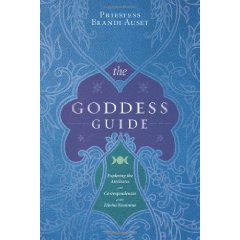 Perché Cerridwen incarna il lato “stregonesco” e sessuale (quindi potenzialmente pericoloso rispetto a Rhiannon, nella quale questo aspetto viene “depotenziato” con l’affermazione di una sua mai completamente delineata verginità) della dea madre a partire dalla prima leggenda fondativa che la riguarda contenuta nel Mabinogion, il ciclo dei miti gallesi: in esso si racconta come la dea fermenti una pozione nel suo calderone magico per darla al figlio Afagddu e migliorarne le fattezze; avendo posto il giovane Gwion a custodia del calderone, tre gocce della sostanza in esso contenuta cadono su un dito del ragazzo, che diventa onnisciente e viene per questo perseguitato dalla dea attraverso un ciclo di stagioni fino a quando, sotto forma di una gallina, essa non riesce a catturalo e ingoiarlo mentre si nasconde tramutato in una spiga di grano, finendo nove mesi dopo, per partorire Taliesen, il più grande di tutti i poeti gallesi[15].
Perché Cerridwen incarna il lato “stregonesco” e sessuale (quindi potenzialmente pericoloso rispetto a Rhiannon, nella quale questo aspetto viene “depotenziato” con l’affermazione di una sua mai completamente delineata verginità) della dea madre a partire dalla prima leggenda fondativa che la riguarda contenuta nel Mabinogion, il ciclo dei miti gallesi: in esso si racconta come la dea fermenti una pozione nel suo calderone magico per darla al figlio Afagddu e migliorarne le fattezze; avendo posto il giovane Gwion a custodia del calderone, tre gocce della sostanza in esso contenuta cadono su un dito del ragazzo, che diventa onnisciente e viene per questo perseguitato dalla dea attraverso un ciclo di stagioni fino a quando, sotto forma di una gallina, essa non riesce a catturalo e ingoiarlo mentre si nasconde tramutato in una spiga di grano, finendo nove mesi dopo, per partorire Taliesen, il più grande di tutti i poeti gallesi[15].
Come è facile notare, le istanze di trasformazione sono molto presenti lungo tutta la leggenda, con i due protagonisti che si mutano in un numero notevole di animali e piante, con un forte simbolismo legato alle trasformazioni cicliche della natura e del mondo, ma anche altri elementi rivestono un notevole interesse: in particolare, allorché, dopo la nascita di Taliesen la dea contempla l’uccisione del bambino, ma, cambiando idea, decide invece di gettarlo in mare, dove è salvato dal principe celtico Elffin, risulta evidente il rimando ai cicli cosmici di morte e rinascita, dei quali, tra l’altro, il calderone sacro della dea (che, secondo alcuni, sarà il primo nucleo del mito del Graal), risulta, con il suo potere rigenerativo, paradigma ultimativo[16].
Dunque, nella cultura celtica, la figura della dea madre, epitome del femminino sacro, risulta ben presente, ma anche multiforme e sfaccettata, specchio di una società in cui la donna ha grande possibilità di movimento e, conseguentemente, di espressione di tutti gli aspetti del dominio lunare.
Nel mondo norreno, indubbiamente caratterizzato da aspetti meno filosofico-speculativi e più pratici, tutto si semplifica notevolmente e la figura della dea madre diviene più lineare e a tutto tondo, venendo incarnata da Frigga.
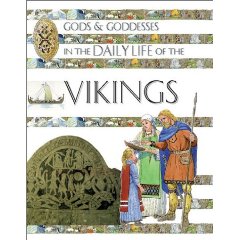 Frigga (noto anche come Frigg, “l’amata”) era la dea dell’amore coniugale, del matrimonio e del destino, la moglie del potente signore degli dei Odino. Responsabile della tessitura delle nuvole (e quindi, in un tipico attributo della dea madre, del sole e della pioggia, quindi della fertilità dei raccolti), e dei destini di tutti i viventi, Frigga era una veggente (sebbene non potesse cambiare gli eventi che vedeva) ed era, con palese riferimento lunare, la dea della notte, perché proprio di notte, in un richiamo sessuale “pacificato” (rispetto alla sessualità “pericolosa” e conturbante, che era appannaggio di Freya, dea della bellezza sensuale), dispensava la vita, tanto che la sua benedizione veniva invocata dalle partorienti.
Frigga (noto anche come Frigg, “l’amata”) era la dea dell’amore coniugale, del matrimonio e del destino, la moglie del potente signore degli dei Odino. Responsabile della tessitura delle nuvole (e quindi, in un tipico attributo della dea madre, del sole e della pioggia, quindi della fertilità dei raccolti), e dei destini di tutti i viventi, Frigga era una veggente (sebbene non potesse cambiare gli eventi che vedeva) ed era, con palese riferimento lunare, la dea della notte, perché proprio di notte, in un richiamo sessuale “pacificato” (rispetto alla sessualità “pericolosa” e conturbante, che era appannaggio di Freya, dea della bellezza sensuale), dispensava la vita, tanto che la sua benedizione veniva invocata dalle partorienti.
Madre amorevole di tutto il creato, la sua capacità di vedere nel futuro le avrebbe causato il più grande dolore, avendo previsto la morte del suo figlio prediletto Baldur: pur sapendo di non poter cambiare il suo destino, Frigga aveva fatto promettere a tutte le cose di non fare del male al figlio, ma purtroppo aveva trascurato una cosa, il vischio, che sembrava troppo insignificante per essere pericoloso e il malvagio Loki, scoperta questa dimenticanza, aveva collocato nelle mani di Hodor, fratello di Baldur, una freccia di vischio, facendogliela scagliare, durante una sessione di apprendimento di tiro con l’arco, nel cuore del “più perfetto tra gli dei”[17]. In alcune versioni del mito, a questo punto, interviene un’altra caratteristica della “dea madre” Frigga, quella rigenerativa (della natura, dei frutti della terra, etc.), che riesce a riportare Baldur in vita, mentre un’altra caratteristica è presente in tutte le saghe che la riguardano, quella di fornire nutrimento materno agli esseri umani, tanto che in Germania veniva venerata come la dea Holda o Bertha (la dea dell’allattamento e dei raccolti), in seguito modello per la favola di “Mamma Oca”.
Infine, all’apice dei suoi tratti simbolici, Frigga era anche dea della fertilità femminile e del matrimonio e, in quanto tale, era pregata dalle mogli sterili e dalle ragazze in età da marito[18].
[3] K. Ralls-MacLeod, I. Robertson, The Quest for the Celtic Key, Luath Press Limited 2005, pp. 49 ss.
[5] J. A. MacCulloch, The Religion of the Ancient Celts, General Books LLC 2010, pp.23-24
[7] P. Berresford Ellis, Celtic Women: Women in Celtic Society & Literature, Trans-Atlantic Pub. 1996, passim
[8] L. Jones, Druid-Shaman-Priest: Metaphors of Celtic Paganism, Hisarlik Press 1998, pp. 45 ss.
[10] P. Berresford Ellis, Citato, p.77
[12] M.J. Aldhouse-Green, Celtic Goddesses: Warriors, Virgins and Mothers, George Braziller 1996, pp. 107 ss.
[17] M. Pope Osborne, Favorite Norse Myths, Scholastic 2001, pp. 51-52

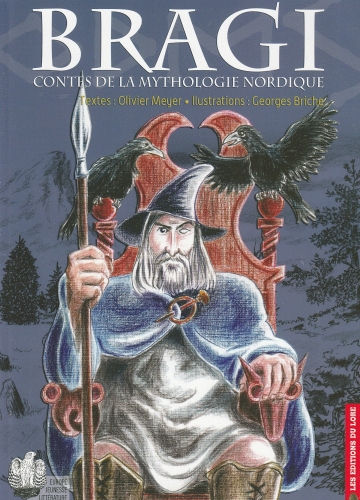



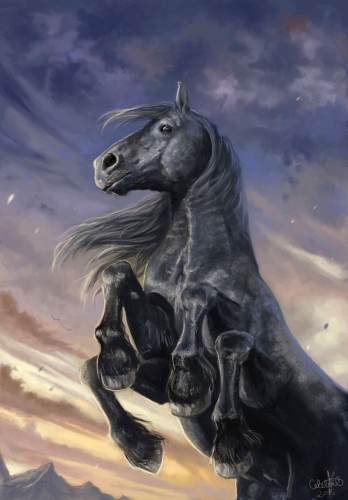
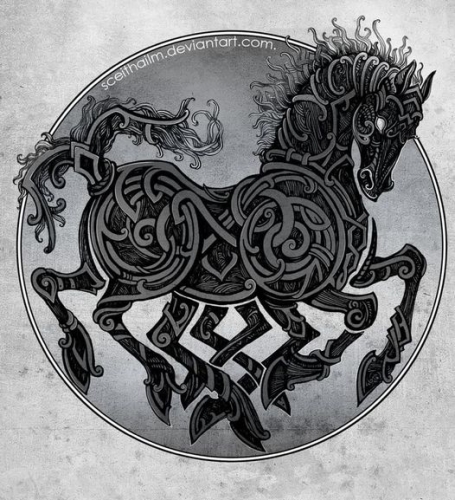

 del.icio.us
del.icio.us
 Digg
Digg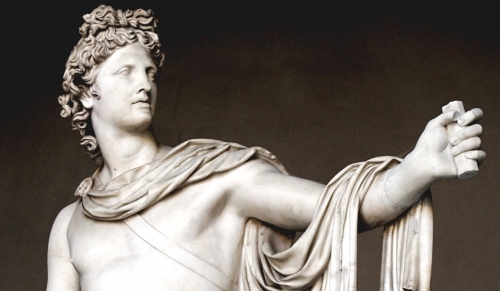
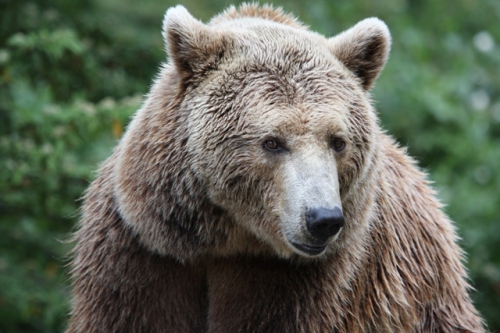
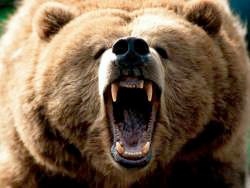 To the Norse people the Bear was also a very powerful symbol very much attached to their beliefs and their warrior cults. People believed in many gods but there was always a group of people, a cult, dedicated to just one specific god, and in the Norse culture the warriors dedicated to Odin were called Berserkers, whose name comes from the word Bersark which means literally bearskin, which they wore for magical purposes and to honor the strength of the bear and become like him, fierce, strong, ferocious, violent in battle. These warriors would enter in an altered state of mind and call upon the spirit of the bear, becoming a bear themselves so they would not feel any pain during the battle, in order to keep the fight longer, roaring, putting fear upon their enemies. There are many accounts of this, of these warriors taking the amanita muscaria mushrooms, to enter in trance, and go completely crazy, becoming beasts ( this is from where and why the English word Berserker, or to go Berserker, came from ) wearing bear skins and nothing else, and sometimes even totally naked while going to battle and use their own hands and teeths to kill the enemies and tear off their armour and break their shields.
To the Norse people the Bear was also a very powerful symbol very much attached to their beliefs and their warrior cults. People believed in many gods but there was always a group of people, a cult, dedicated to just one specific god, and in the Norse culture the warriors dedicated to Odin were called Berserkers, whose name comes from the word Bersark which means literally bearskin, which they wore for magical purposes and to honor the strength of the bear and become like him, fierce, strong, ferocious, violent in battle. These warriors would enter in an altered state of mind and call upon the spirit of the bear, becoming a bear themselves so they would not feel any pain during the battle, in order to keep the fight longer, roaring, putting fear upon their enemies. There are many accounts of this, of these warriors taking the amanita muscaria mushrooms, to enter in trance, and go completely crazy, becoming beasts ( this is from where and why the English word Berserker, or to go Berserker, came from ) wearing bear skins and nothing else, and sometimes even totally naked while going to battle and use their own hands and teeths to kill the enemies and tear off their armour and break their shields.